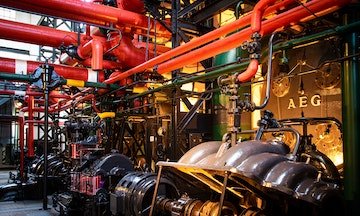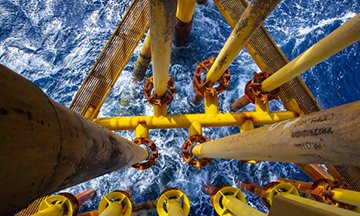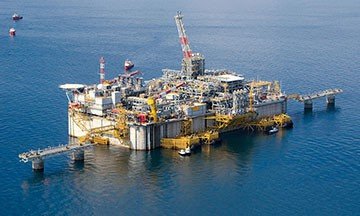Oil and Gas Value Chain – Upstream, Midstream and Downstream
| Date | Format | Duration | Fees | |
|---|---|---|---|---|
| 22 Apr - 26 Apr, 2024 | Live Online | 5 Days | $2250 | Register |
| 03 Jun - 07 Jun, 2024 | Live Online | 5 Days | $2250 | Register |
| 26 Aug - 30 Aug, 2024 | Live Online | 5 Days | $2250 | Register |
| 02 Sep - 06 Sep, 2024 | Live Online | 5 Days | $2250 | Register |
| 28 Oct - 01 Nov, 2024 | Live Online | 5 Days | $2250 | Register |
| 16 Dec - 20 Dec, 2024 | Live Online | 5 Days | $2250 | Register |
| Date | Venue | Duration | Fees | |
|---|---|---|---|---|
| 27 May - 31 May, 2024 | Dubai | 5 Days | $4750 | Register |
| 10 Jun - 14 Jun, 2024 | Dubai | 5 Days | $4750 | Register |
| 17 Jun - 21 Jun, 2024 | Kampala | 5 Days | $4950 | Register |
| 15 Jul - 19 Jul, 2024 | Dubai | 5 Days | $4750 | Register |
| 12 Aug - 16 Aug, 2024 | Toronto | 5 Days | $5695 | Register |
| 12 Aug - 16 Aug, 2024 | Dubai | 5 Days | $4750 | Register |
| 16 Sep - 20 Sep, 2024 | Cairo | 5 Days | $4950 | Register |
| 23 Sep - 27 Sep, 2024 | Dubai | 5 Days | $4750 | Register |
| 14 Oct - 18 Oct, 2024 | Toronto | 5 Days | $5695 | Register |
| 14 Oct - 18 Oct, 2024 | Dubai | 5 Days | $4750 | Register |
| 25 Nov - 29 Nov, 2024 | Dubai | 5 Days | $4750 | Register |
| 02 Dec - 06 Dec, 2024 | Amsterdam | 5 Days | $5695 | Register |
| 02 Dec - 06 Dec, 2024 | Dubai | 5 Days | $4750 | Register |
Course Overview
What constitutes the upstream, midstream and downstream parts of the oil and gas supply chain? The upstream sector is generally known as the exploration and production sector concerned with identifying suitable locations for drilling wells to obtain resources and recovering these from the sites identified. The midstream sector of the chain includes processing, storage, transportation and marketing of oil and gas. The midstream sector is the link between the upstream and downstream sectors. The downstream sector is closer to the customer and mainly covers all important aspects critical to ensure timely delivery to the customer. Through the oil and gas value chain, each of these sectors and their related activities hold great significance.
This Zoe training course will empower you with a comprehensive understanding and complete knowledge of the oil and gas value chain. Understanding and gaining experience in all three sectors of the supply chain would increase your chances and potential to assume higher roles and responsibilities to oversee end-to-end operations, from location of raw materials to delivery to customers. The knowledge gained through this course will help you in not just roles restricted to managing operations within the three main sectors but other related opportunities requiring thorough understanding of end-to-end oil and gas operations.
Course Objectives
The main objective of this training program is to empower professionals with—
- detailed knowledge and understanding of the oil and gas supply chain, with a comprehensive review of all activities in the upstream, midstream and downstream sectors
- adequate understanding and knowledge to train and guide other professionals on effective practices for performing one or more functions of the three sectors
- the capability and skill to direct and implement change in current processes and systems to make operations smarter and faster, linking all three sectors effectively
- the skill and experience to work with technology to introduce maximum automation for effective data management and retrieval
- the exposure and confidence to contribute to organisational development through enhanced operations
- the overall skillset and capabilities to assume higher roles and responsibilities concerned with end-to-end management of the oil and gas supply chain, thereby increasing chances for faster career progression
- the ability to create effective strategies and change them as and when required, thereby mitigating risks and effectively addressing business challenges
- the knowledge and understanding to contribute to organisational cost saving, increasing profits and fostering growth and development
Training Methodology
Zoe Talent Solutions lays great stress on relevance of the training topic to the training audience. Before commencement of each training session, the content is thoroughly reviewed to ensure relevance to the professional and/or academic backgrounds of the trainees. Two-way participation is encouraged through activities in groups, mainly to encourage interaction among trainees. A highly experienced professional delivers the training content. Experiential learning forms an integral part of the training.
The above innovative approach to training was devised by Zoe Talent Solutions and is used for all its courses. It is called the Do–Review–Learn–Apply Model.
Organisational Benefits
By professionals undertaking this training course, their organisations will derive the following benefits:
- Effective and smart operations through all sectors of the oil and gas value chain, that is, the upstream, midstream and downstream sectors
- Application of advanced techniques and changes to enhance operational efficiency and encourage operational excellence
- Introduction of technology to reduce manual intervention and improve data maintenance and retrieval
- Regular training of other employees on systems and processes to minimise error due to manual intervention
- Better risk assessment, analysis and mitigation, thus increasing investments and contributing to organisational development
- Effective and safe change management spearheaded by experienced professionals
- Availability of cross-skill in case of contingencies in any one sector
- Reduced costs and effective tracking of expenditures by the organisation
- Adherence to international standards and benchmarks, thereby increasing credibility of the organisation to compete in the global market
Personal Benefits
Professionals enrolling for this training course will derive the following benefits:
- Comprehensive understanding and detailed knowledge of all three main sectors of the oil and gas supply chain, that is, the upstream, midstream and downstream sectors
- Increased exposure and experience to introduce technology to reduce manual intervention where possible and to effectively manage data
- Enhanced skill and experience to smoothly manage change in systems and processes within the organisation
- Greater understanding and confidence to train other professionals on advanced systems and processes as part of continuous learning and development
- Enhanced skillset and capabilities to assume higher roles and responsibilities requiring one to oversee operations across all three sectors of the supply chain, thereby placing one as a competent professional on a global platform
- Increased awareness to change plans as per challenges and risks predicted for future, to minimise impact to business operations
- Greater understanding and awareness of cost management to reduce unnecessary and redundant costs for one’s organisation
Who Should Attend?
- Senior members and top management of an organisation who play a key role in critical decision-making for the organisation
- Managers and operators of the three sectors of the value chain responsible for overseeing operations
- Technicians and engineers performing various functions across all three sectors
- Auditors and quality managers responsible for ensuring adherence to set standards
- Financial advisors responsible for providing financial advice and controlling the expenditures of the organisation
- Vendors and other external stakeholders involved in some or more activities across the upstream, midstream and downstream sectors
- Any other professional who would like to know more about the upstream, midstream and downstream sectors of the supply chain
Course Outline
The course covers the following areas to thoroughly understand the upstream, midstream and downstream sectors of the oil and gas supply chain:
Module 1 – Characteristics of Upstream Oil and Gas Business
- High risk, high return
- Highly regulated
- Impact by global politics
- Technology intensive
Module 2 – Sectors Within the Upstream Industry
- Offshore drilling
- Oil sands mining
- Supply and service
- Manufacturing
- Seismic surveys
- Geological surveys
- Reclamation
Module 3 – Components of Upstream Oil and Gas Operations
- Exploration
- Drilling
- Production
Module 4 – Challenges in Upstream Operations
- Remote geographic location
- Transportation
- Inventory management
- Project supply chain challenges
- Inbound supply chain challenges
- Outbound supply chain challenges
- Remote worker supply chain challenges
- Emergency supply chain challenges
Module 5 – Key Components of Midstream Assets
- Distribution
- Storage
- Processing
- Fractionation
- Marketing
Module 6 – Midstream Operating Components
- Gathering
- Field processing
- Fractionation
- Transportation
Module 7 – Success Factors of Midstream Operations
- Upstream operations’ continuous delivery of reserves
- Refinery margins encouraging refined product production
- Health of downstream and natural gas industry markets
- Natural gas price levels that impact attractiveness
- Political sentiment
Module 8 – Midstream Business Characteristics
- Low risk
- Highly regulated
- Dependence on health of upstream sector
- Reliant on supply
- Market prices affecting demand
Module 9 – Key Downstream Sectors in Oil and Gas
- Oil refining
- Separation
- Conversion
- Treatment
- Supply and trading
- Product marketing (wholesale and retail)
Module 10 – Types of Downstream Risks and Their Management
- Environmental risks
- Demand risks
- Manufacturing risks
- Supply risks
- Supply chain backward flow risks











